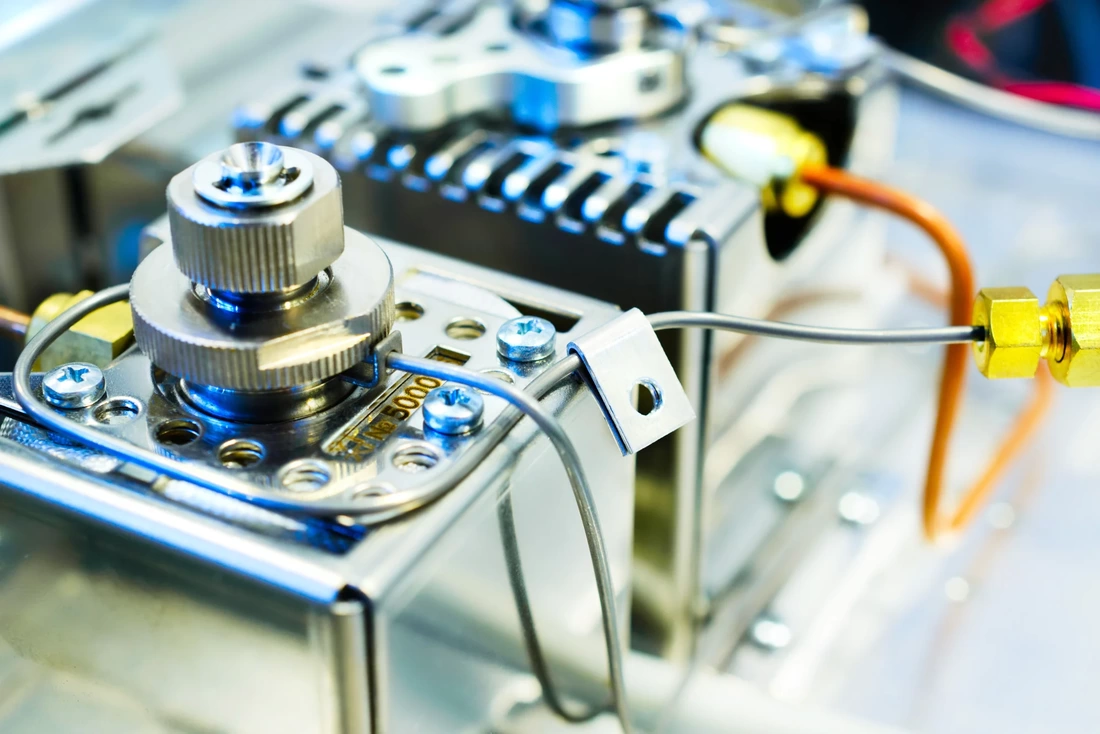 When it comes to scientific research, proper sample storage and analysis are crucial for accurate results. Chromatography vials play a vital role in this process, providing a clean and safe environment for storing and analyzing samples. Whether you are working in a pharmaceutical laboratory or conducting environmental testing, using high-quality Chrom Tech vials is essential for optimal performance and reliability. Chromatography vials are specially designed containers that hold samples during chromatographic analysis. Chromatography is a technique used to separate and analyze chemical substances in a mixture. It is widely used in various fields, including analytical chemistry, biochemistry, pharmaceuticals, and environmental science. The quality and integrity of the vials used in chromatography directly impact the accuracy and sensitivity of the analysis. One of the key features of chromatography vials is their ability to provide an airtight seal. This is important to prevent contamination or evaporation of the samples, which can lead to inaccurate results. The vials are typically made of glass or plastic, depending on the requirements of the analysis. Glass vials are preferred for their inert nature and resistance to chemical reactions. Plastic vials, on the other hand, are lightweight and shatter-resistant, making them suitable for certain applications. Chromatography vials come in various sizes, typically ranging from 1.5 mL to 4 mL. The choice of vial size depends on the sample volume and the type of analysis being conducted. It is important to select the appropriate vial size to ensure efficient sample handling and minimize waste. Some vials may also come with integrated inserts or graduated markings, allowing for precise measurements and improved compatibility with autosamplers. In addition to the vials themselves, proper vial closures or caps are equally important. The closures help create a secure seal, preventing any leakage or contamination; click to read more on this blog. The choice of closure material, such as rubber or silicone, should be compatible with the sample being analyzed to avoid any adverse reactions. Some closures also come with pre-slit septa, which are pierced by syringe needles during injection, ensuring a clean and precise sample introduction. In conclusion, chromatography vials are essential components in sample storage and analysis. Their quality, design, and compatibility with the analysis method greatly influence the accuracy and reliability of the results. Choosing the right vials and closures based on the specific requirements of the analysis is crucial for successful chromatographic experiments. By investing in high-quality chromatography vials, scientists and researchers can ensure optimal sample integrity and obtain reliable data for their studies. Check out this post for more details related to this article: https://en.wikipedia.org/wiki/Gas_chromatography.
0 Comments
 Chrom Tech is a leading provider of innovative laboratory solutions that are revolutionizing the way scientists and researchers conduct their experiments. With a wide range of high-quality products and a commitment to exceeding customer expectations, Chrom Tech has established itself as a trusted name in the industry. One of the key strengths of Chrom Tech is its focus on continuous research and development. The company invests heavily in cutting-edge technologies and collaborates with experts in the field to develop products that meet the evolving needs of the scientific community. This dedication to innovation has resulted in a portfolio of state-of-the-art laboratory equipment, consumables, and chemicals that are designed to streamline workflows and improve research outcomes. Go right here to know more about this resource. Chrom Tech's product offerings cover a diverse range of applications, including chromatography, sample preparation, liquid handling, and molecular biology. Whether you need high-performance liquid chromatography (HPLC) systems, advanced gas chromatography (GC) instruments, or precision pipettes, Chrom Tech has got you covered. In addition, the company also provides a comprehensive selection of analytical and lab supplies, ensuring that researchers have access to all the necessary tools and materials. What sets Chrom Tech apart from its competitors is not just its extensive product range, but also its commitment to customer service. The company's team of experts is readily available to provide technical support, comprehensive training, and prompt assistance to resolve any issues that may arise. Chrom Tech understands that every laboratory has unique requirements and takes a personalized approach to help scientists find the right solutions for their specific needs. In conclusion, Chrom Tech is revolutionizing laboratory solutions with its innovative products and exceptional customer service. By investing in research and development and staying ahead of industry trends, the company continues to provide cutting-edge solutions that empower scientists and researchers to achieve their goals. With Chrom Tech as a partner, laboratories can improve efficiency, accuracy, and overall research outcomes. Check out this post for more details related to this article: https://en.wikipedia.org/wiki/Chromatography.  In the field of analytical chemistry, chromatography is a widely used technique for separating and analyzing complex mixtures. One critical component of the chromatography process is the vial, in which the sample is prepared and stored. Chromatography vials play a crucial role in maintaining sample integrity and ensuring accurate results. In this article, we will explore the importance of chromatography vials and the key factors to consider when choosing the right vial for your analysis. 1. Size and Capacity: Chromatography vials come in various sizes and capacities to suit different analytical needs. The most common sizes range from 1.5 mL to 4 mL, with larger options available for specialized applications. It's essential to select a vial that can accommodate your desired sample volume comfortably. Overfilling or underfilling the vial can have adverse effects on the chromatographic analysis, leading to inaccurate results and decreased sensitivity; more details are linked here. 2. Vial Material: The choice of vial material is crucial as it can impact the sample's stability and compatibility with the analysis technique. Glass vials are commonly used due to their excellent chemical resistance and low reactivity. Borosilicate glass, in particular, is highly recommended as it offers exceptional resistance to thermal shocks and is compatible with a wide range of solvents. Plastic vials, such as polypropylene, are also available and offer advantages like being lightweight, shatterproof, and disposable. 3. Vial Design: The design of chromatography vials can vary, and it's essential to consider factors like the vial's opening type, closure system, and compatibility with automated systems. The most common vial opening types are crimp top and screw top. Crimp-top vials require the use of a separate crimper tool to secure the closure, while screw-top vials can be easily sealed with a screw cap, making them more convenient for quick and repeated access. Depending on your analytical setup, you may also need vials compatible with autosamplers, which allow for high-throughput sample handling. Click here to know more on this resource. 4. Vial Quality: Ensuring the quality and cleanliness of chromatography vials is crucial to obtaining reliable and reproducible results. Look for vials that are certified to be free of contaminants and manufactured following strict quality control procedures. These vials should be designed to reduce the risk of contamination and preserve the sample's integrity during storage and analysis. Additionally, opt for vials that have undergone rigorous testing to ensure optimal performance, such as reduced adsorption and consistent dimensions. In conclusion, chromatography vials are an integral part of sample preparation and analysis in chromatography techniques. Choosing the right vial size, material, and design can significantly impact the accuracy and efficiency of your analytical results. By considering factors like size and capacity, vial material, design, and overall quality, you can ensure that your chromatography vials meet the specific requirements of your analysis, leading to reliable and reproducible data. You can get more enlightened on this topic by reading here: https://en.wikipedia.org/wiki/Paper_chromatography. |
|
